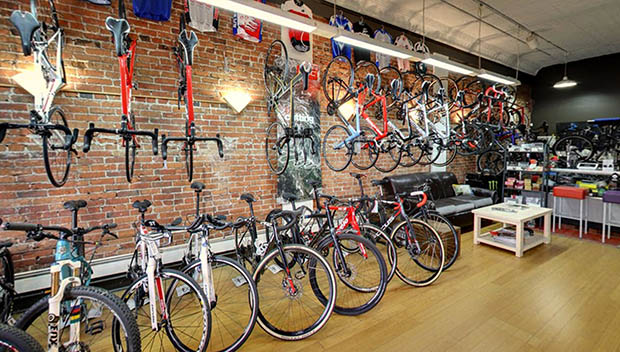
When you find a bike that fits you, comes in a colorway that you can't get enough of and that looks so fast even when it's not moving, you know it's right for you. But how do you get to that place?
Gauge Commitment
How committed to cycling are you? Are you looking to get out on weekends, or are you planning to race? Are you new to cycling, or are you looking to upgrade your current ride? Consider how you'll use the bike—think dollars per mile—and amortize your bike over distance and years.
Set a Budget
If you're just getting started, you'll also need a helmet, cycling shoes, several pairs of cycling shorts and jerseys, pedals, a bottle cage, saddle pack, spare tubes, CO2 and a floor pump. Shop around for starter packages; if your local bike shop does not advertise a special starter package, ask!
Pro Tip: If you can, buy a bike that's at the top of your price range. In the long run, you'll be happier with the better ride quality and components and less likely to want to upgrade—which would lead to you spending more than you had originally budgeted in total.
Materials
Your budget may dictate this. At price points below $2,500, aluminum bikes—not carbon—are the best option. Aluminum is often lighter, more forgiving and more resilient than inexpensive carbon.Match Riding Style and Intended Use
How do you plan to ride? In the drops or upright? Will you always be on smooth pavement, or do you plan to explore gravel? Will you be a crit racer, or will you be riding in gran fondos? Answering these questions will help narrow the range of bikes you might be considering.
Prioritize Features
If you're riding in a region that is predominantly rainy, look for bikes equipped with hydraulic disc brakes, which offer superior stopping in all weather conditions. If you plan to race, you may want to consider prioritizing bikes with race wheels included.
Ask a Friend
While a friend's opinion about bikes can be biased, their personal experience—especially from a trusted friend—can also provide you with valuable insight.
Skip the Big Box Store
Big box stores, like Dick's Sporting Goods, are fine for buying fishing gear, but avoid them when bike shopping. The bikes sold at these multi-purpose stores are generally low quality, are frequently assembled poorly and aren't properly fit to your individual needs.
However, REI has a dedicated bicycle department with professionally-trained bike mechanics and an established bike sales and service department.
Buying Used
Caveat emptor. Unless you have experience with buying online and you know your exact needs, size, the reputation of the seller and the verifiable condition of the bike, you could be setting yourself up for a risky situation. While buying in person can be slightly risky, you should get any used bike checked out by a bike mechanic prior to purchase.
Beware of Counterfeits
If a bike "deal" looks too good to be true, it probably is. When buying online, don't go in for an un-branded, generic model or worse, a counterfeit model fabricated to look just like the real thing. Unbranded bikes may offer a warranty that could be nearly impossible to collect, and a counterfeit bike could be downright dangerous to ride due to low or non-existent quality control.
Get a Fit
If you're going to be riding more than just a few miles on the weekend, the first thing you need to do when bike shopping is get a bike fit. A fitting will provide you with the information to get a properly-sized bike, and let you know how it needs to be adjusted to match your body dimensions and riding style. If you want a bike just to get and stay fit, ask your local bike shop expert for help in properly sizing it. Even a casual rider can develop injuries from an improperly fitted bike.
Pro Tip: Make sure to bring your pedals, cycling shorts and shoes—if you have them—when you get your bike fit. Your fitter will be measuring you in a riding position, so being prepared for this is important.
Test Ride
Now comes the fun part! After you've been fit, it's time to test ride. Don't be shy about asking your bike shop rep to set the test bike up for you. This means adjusting saddle height and angle, as well as swapping stems if necessary, to ensure you're properly set up for a test ride.
Sleep on It
Whether you're spending $100s or $1000s on a bike, take your time to make the purchase. After you do your research, get a bike fit and go on a test ride, make an effort to get some perspective. Although it this may be counterintuitive, if you can be unemotional about your potential purchase, you're likely to be much happier with your bike in the long run.
Go Buy That Bike!
Don't forget to ask about service plans, a 30-day tune-up for the bike and a check-in for your bike fit.
READ THIS NEXT: What to Expect When Getting a Bike Fit


